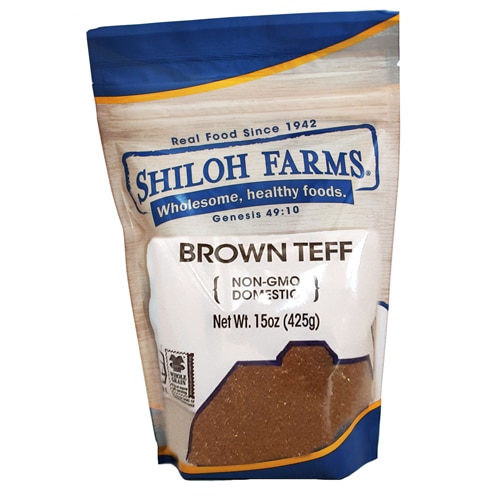A well-stocked pantry is the secret to good health. For most of us, it’s more pantry-to-table than farm-to-table, especially in winter. It boils down to this: The food you have access to is the food you eat. And the single best investment you can make for your health is to eat well. So making sure you have plenty of healthy food available is a must to eat clean. (It needs to taste good too, or even the best intentions will falter during a snack attack.)
Ever tried to cobble a recipe together but been foiled by the lack of one key ingredient? A pantry overhaul helps you have the right ingredients on hand—and at your fingertips. When your pantry is stocked with strategic staples, it’s easy to put together a quick, well-balanced meal. Follow our three easy steps—rid, reorganize and restock—for a nutritional pantry makeover that inspires you to eat right.
1. Rid
The first thing to do when planning how to organize a pantry is to physically face it with three empty boxes: keep, donate and toss. Toss anything past its expiry date. Donate foods that you will never use or are overly processed, such as white rice, salty, fried snack foods like potato chips and corn chips, vegetable oils, sugary cereals or high sodium canned soups. You also want to avoid artificial ingredients, such as preservatives, artificial sweeteners and artificial colors.
You don’t have to be an absolute purist, but minimizing the number of items with high sugar, salt and fat content (think cookies, chips, candy, sodas) helps you make better choices when hunger strikes. If you do keep a few of your favorites, keep them tucked away out of site to avoid blatant temptation.
2. Reorganize
If you’re anything like me, at this point the cupboard is almost bare, down to a third or so of its previous contents. There’s something about those empty shelves that beg to be restocked. But first, a bare pantry presents a golden opportunity to vacuum any crumbs off of shelves and the floor and wipe down shelves. Once it’s clean, it’s worth creating a storage plan. Otherwise the previous jumble will slowly reassert itself.
Now is the time to buy extra containers or pantry organizers to corral miscellaneous or smaller items. Glass containers for bulk items make a world of difference in terms of being able to see what you have at a glance. Labelling bulk-bin stuffs makes good sense to, helping you tell the difference between rye and wheat, teff and quinoa (all grains I have been struggled to identify correctly).
Organize your pantry in zones, such as putting baking items (flour, sugar, baking soda, etc.) in one section and breakfast items in another. A snack zone for kids helps them find what they need easily. Place your healthiest foods at eye level so they stand out visually. Position whole grains, pulses, dried fruits and nuts, healthy oils, and minimally processed cereals and crackers in plain sight. If you have small space, keep like items in bins, such as breakfast bars, so you can get rid of bulky packaging and store more.
3. Restock
Here are some savvy picks for a well-stocked pantry. Having good quality items on hand means you always have the potential for a spontaneous, great meal. Now you can apply your discrimination and choose healthier versions of your favorite staples.
Healthy oils
It’s smart to have an array of healthy oils for cooking, baking and salads. Opt for healthy oils like peanut, olive, sunflower, canola (is mostly GMO unless you choose organic) and sesame, which are high in either heart healthy monounsaturated fats or polyunsaturated fats.
Canned goods
In general, given the fact that most canned foods contain the industrial chemical BPA in their linings, it’s probably smart to curb consuming too many canned foods in your diet. BPA is linked with disrupting our bodies hormones (canned soups and pastas contain the highest levels of BPA, whereas canned beverages, meat and fish are not). Plus, many canned goods are high in salt and preservatives. Look for low-salt canned soups that include beans and vegetables, and are broth-based (instead of creamy).
Or opt for healthier canned beans (look for no salt added) instead, that you can use to make a variety of easy dishes like soup, stew, rice and beans or toss on a green salad for some extra protein. If you can’t find low sodium, rinsing the canned beans can reduce the sodium by as much as 40 percent. Keeping a few cans of coconut milk in your pantry means it’s easy to turn dishes into curry or make vegan whipped cream in a jiffy.
Nuts, seeds and dried fruits
Raw almonds, cashews, walnuts, pumpkin seeds and sunflower seeds and dried apricots, dates and raisins are great for baking, salads, vegetable stir-fry dishes and quick snacks. Tahini, nut butters, fruit only spreads have endless uses and make great additions to sandwiches or salad dressings.
Lentils and dried beans
Legumes are low in fat and packed with protein and fiber. Brown lentils, the least expensive variety, cook quickly and can easily form the base of soups, stews and salads. For the healthiest (and most affordable) option, dried beans trump canned.
Whole grains
Experiment with various types of whole grains like quinoa, spelt, barley, bulgur, kamut, brown rice, amaranth and wheat berries. Have plenty of rolled oats to make oatmeal, muesli and homemade granola. If you love cereal, go for whole grain, low-sugar kinds that give you staying power rather than a sugar crash.
Condiments, sauces and milks
Here are a few miscellaneous staples it’s nice to have reserves of: low-sodium vegetable broth, unsweetened plain dairy-free milk alternative, Dijon mustard, apple cider vinegar and nutritional yeast. Nutritional yeast (a.k.a. fairy dust), for those new to it, has an almost cheesy flavor and is wonderful sprinkled on popcorn, brown rice, steamed greens and virtually anything.




